Benrus, an American watch manufacturer founded in 1921, is probably best known by enthusiasts these days for the now-rare and highly collectible field watches it produced for the U.S. military back in the 1970s and ’80s. Relaunched in 2020 after a long hiatus from watchmaking, Benrus already looks to be embracing that aspect of its past to inform its modern collection, Exhibit A being the reissued Type I Limited Edition, which dropped last November.
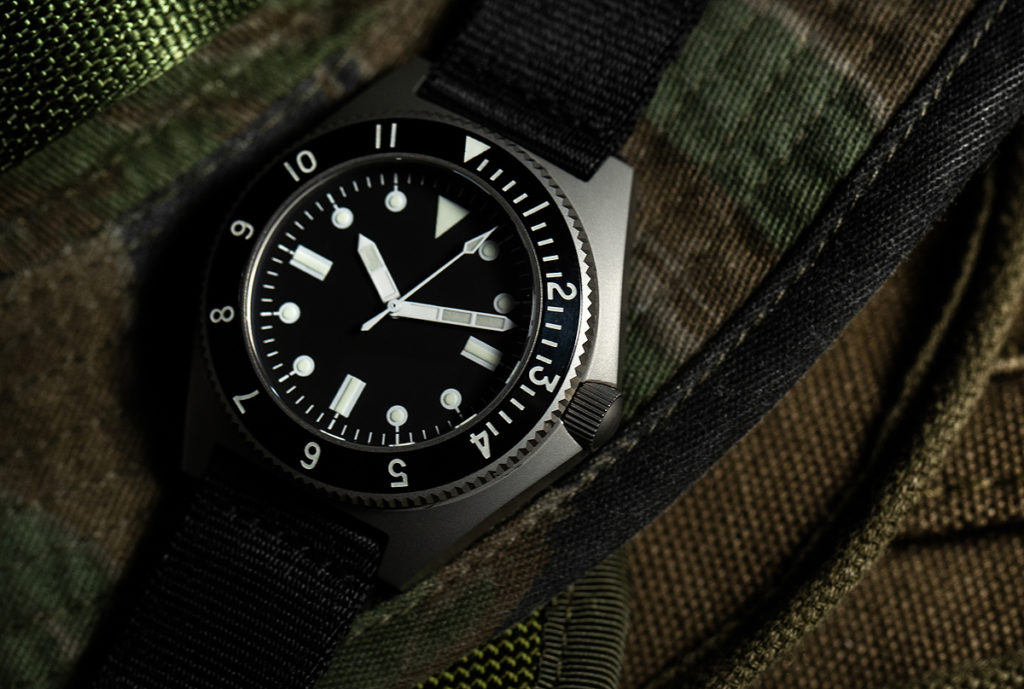
As the first watch manufacturer to secure a military contract during the Vietnam War, Benrus produced the original Benrus Type I from 1972 through 1980. It was designed to meet a specific set of criteria set out by the U.S. Department of Defense, which required a purpose-built timepiece suitable for use by covert and overt military specialist teams such as Navy SEALs, Army Rangers, and Green Berets. These criteria included a then-unprecedented depth rating of 1,200 feet below, and 35,000 feet above, sea level, as well as an automatic movement that could resist extreme impacts and temperatures. Benrus made about 16,000 models of the Type I (in both its Class A and Class B variants, the former differentiated by luminous markers), issuing them to Vietnam-era Elite Forces, but never made them available to the public — hence their desirability on the collectors’ market.
The reissue of the Type I, which is limited to just 1,000 pieces, is in most respects very faithful to its historical forebear. The 42.5-mm, turtle-shaped case has a very utilitarian, bead-blasted, matte finish. As befits a watch to be used by military operators in the field, it has no hint of glints or polishing anywhere. The edges and facets are sharply contoured but organically curved for wrist comfort. The fluted crown screws down into the case and is also shielded from accidental operation by two shoulder-like crown guards that nestle it tightly.
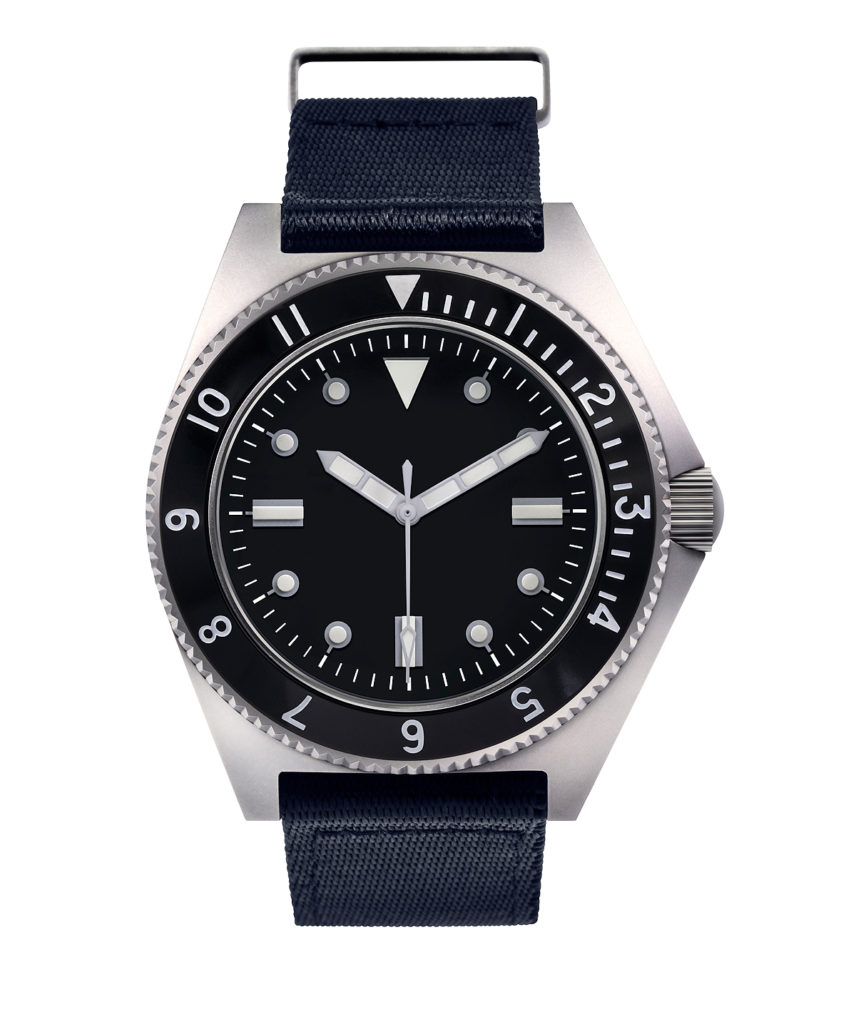
The modern watch that the Type I is most likely to be compared to is a Tudor Black Bay, but this watch is even more embracing of its tool-watch origins. Despite the original Type I’s designation as a “robust dive watch,” its toothed black bezel rotates in both directions rather than one, which prevents it from meeting modern dive-watch criteria. The bidirectional bezel does allow for the setting of countdown times, in concert with the minutes or seconds hand, which is assuredly a purpose this watch’s ancestors served on its wearers’ missions. The first 20 minutes are emphasized with an inverted triangle at 12, Arabic numerals from 1 through 4, and hash marks in between. (The numeral “1” in fact could be mistaken for an elongated hash mark.) Numerals five through 11 have not intermittent scales. Unlike the case and the also very matte black dial, the bezel does have a slight shine to its finish. Despite the grooved edge, the bezel does not audibly ratchet but glides smoothly in both directions.
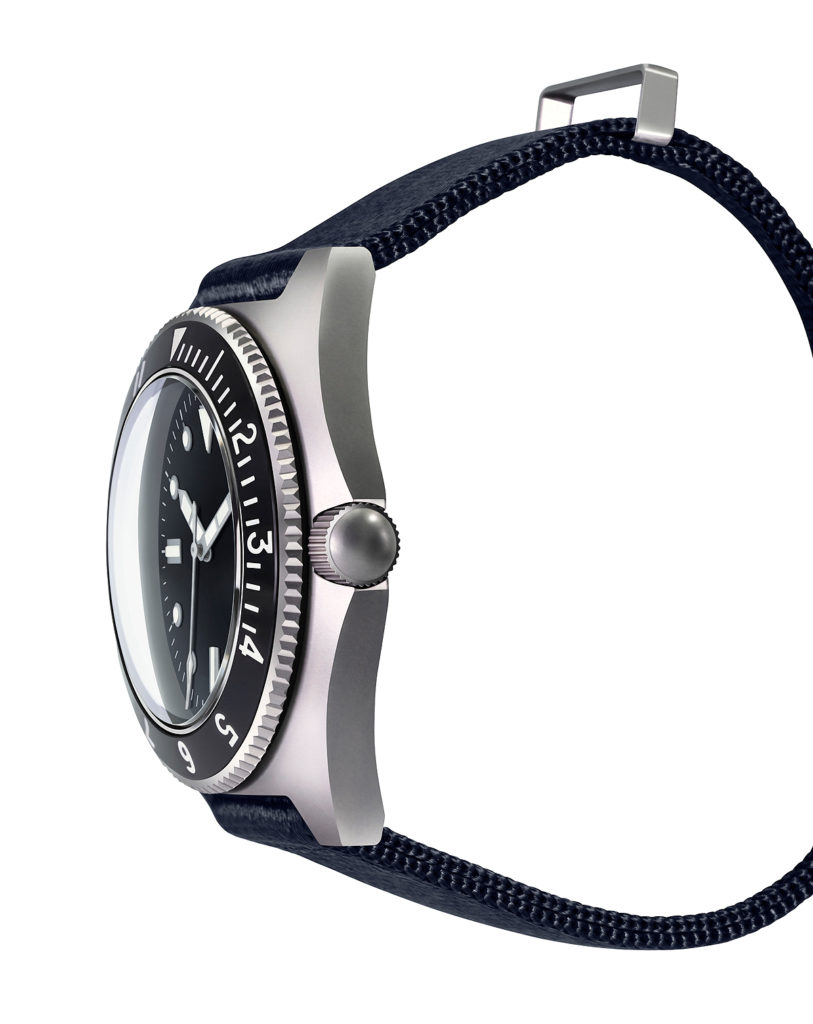
On the simple black dial, under a double-domed sapphire crystal, the hours are marked by a variety of geometrical shapes: the aforementioned inverted triangle for the all-important 12 o’clock orientation mark, wide rectangles at 3, 6, and 9 o’clock, and round “bullets” at the intervening hours. All are treated with a generous helping of luminous material (like the Class A version of the 1970s), legibility in dark conditions being obviously a desirable trait in a military watch. A short hour hand and a long hour hand — both with luminous tips, both shaped somewhat like the Washington Monument, aid in legibility. And the central seconds hand, with its luminous diamond-shaped tip, reveals at a glance if the watch is running, even in the dark. As on the historical military model, the austerity of the dial is unmolested by a brand logo or any other unnecessary text or numerals.
The solid brushed caseback should leave no doubt as to this watch’s MIL-SPEC origins, as a tool watch for troops in the field. It’s filled with identifying engravings, including a serial number and the date of issue (in this case, November 2020). Behind it is the movement, a Swiss-made ETA 2681, with automatic winding, a 28,800-vph frequency, a 38-hour power reserve, and, most notably for its original intended use, a hacking seconds function for synchronizing times on multiple watches. The use of a mechanical, self-winding Swiss movement is also true to the original’s specs; presumably, despite the availability of watches with quartz movements at the time, the DoD did not want its operatives wearing watches whose batteries might run out at an inopportune time.
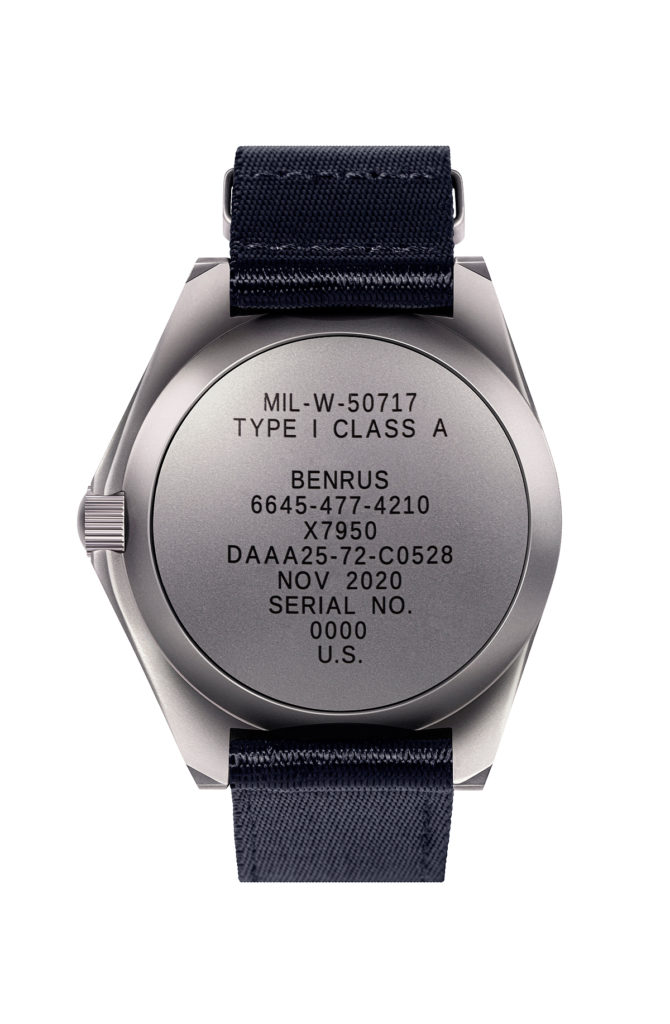
The sharply curved lugs are tightly integrated to the sturdy, two-part black canvas “seatbelt-style” NATO strap, with two loops and a simple pin buckle all forged from the same matte brushed steel as the case. The secure feeling is aided by the use of a row of stitching close to the lug bar on each end of the case, ensuring the case doesn’t move around too much when it’s strapped on. The buckle features a nod to modern branding, with an unobtrusive Benrus logo engraving; otherwise it’s all business. I personally would have preferred one or two more holes for the buckle tongue, as I like to wear watches tighter to the wrist, but this is obviously a personal preference.
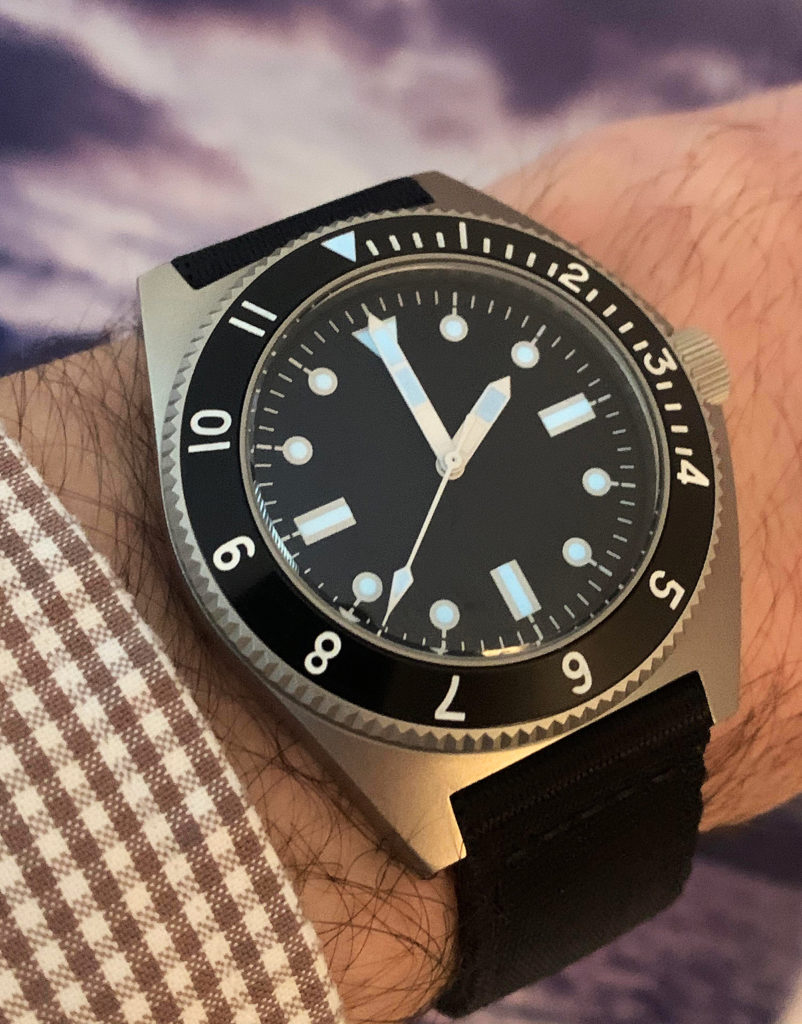
The Benrus Type I — which the New York City-based company proudly reports is “hand-built and assembled” in Arizona — is appropriately packaged in a compact, military green canvas carrying case, with a zippered seal and a stamped Benrus logo. Also appropriately, sales of this military-tribute timepiece, which retails for $1,695, will include a donation to the non-profit Boulder Crest Foundation, which helps combat veterans, first responders, and their families in dealing with the aftermath of trauma.

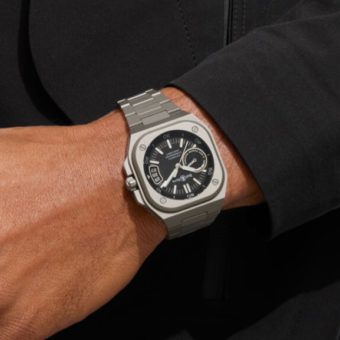
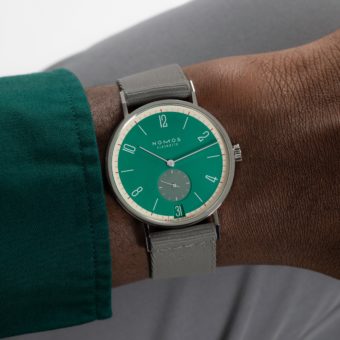
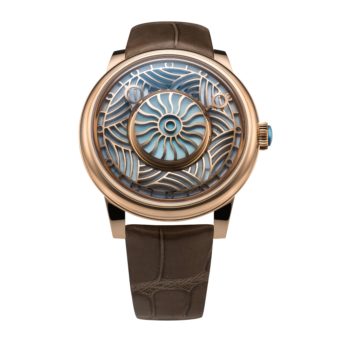
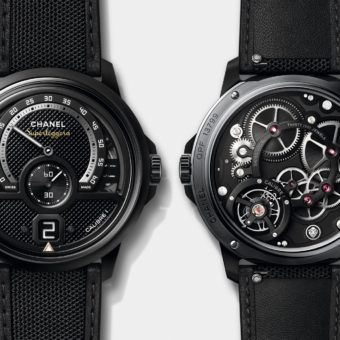
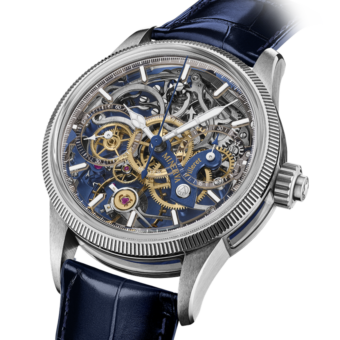
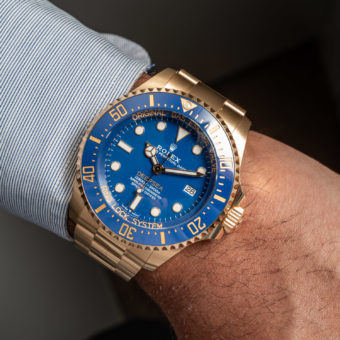
Just read the story behind the Benrus Type 1.
Nice History lessen
Would be interested in one of these.
a good review and a cracking watch in person that hits all the marks. granted i took the strap off but it’s fine all the same. this watch needs to be worn on a host of natos and zulu natos instead. one of my better purchases in recent times.